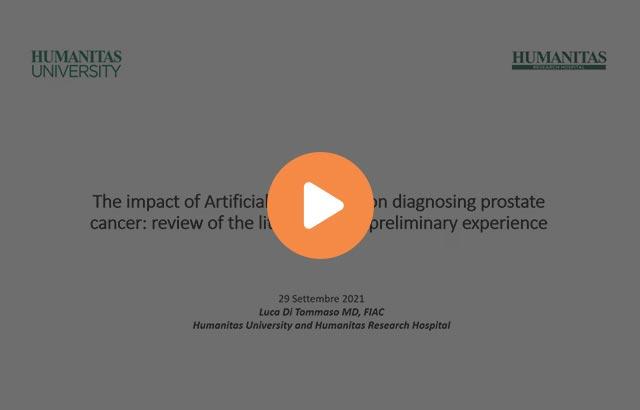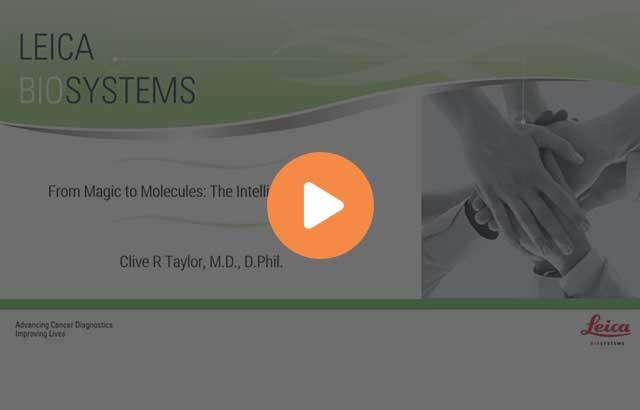
A Deeper Insight on How the Ecosystem Concept may Affect the Implementation of AI in Pathology

An integrated digital pathology ecosystem is only possible to maintain in the long term when international interoperability standards are followed. It must be envisioned as a global strategy comprising not only imaging data.
Digital pathology provides for better patient healthcare by offering excellent quality in pathology diagnosis, improving efficiency in microscopic evaluation, minimizing eventual errors (e.g., making sure that the whole slide has been reviewed), and allowing for automation of image analysis, to improve objectivity and reproducibility in routine tasks like biomarker quantification.
In the evolution towards personalized medicine, the Systems Pathology concept was established by 2010, and it was defined as the integration of clinical, morphological, molecular, and quantitative assessment using new mathematical methodologies 1. Other approaches, like Computational Pathology, are also based on an integrated view of medical informatics and diagnostic machine learning 2.
The integration of AI in pathology must be envisioned as a global strategy, comprising not only imaging data. New natural language processing algorithms play a very interesting role in voice recognition, automatic coding, synoptic reports completion, or data analytics, amongst others. But deep learning also offers a new approach in Next-Generation Sequencing (NGS) data processing, since convolutional neural networks are being trained to improve NGS variant filtering and the rest of the nucleic acid sequencing workflow 3.
Furthermore, this global strategy should embrace not only pathology but also radiology and -omics data in a big data convergence approach, as described by Madabhushi and Lee 4.
This integrated digital pathology ecosystem is only possible to maintain in the long term when international interoperability standards are followed. An effective integration of AI solutions in digital pathology can also benefit from standards and initiatives like Health Level Seven (HL7), Fast Healthcare Interoperability Resources (FHIR) for messaging between information systems, Digital Imaging and Communications in Medicine (DICOM) for image management, and Systematized Nomenclature of Medicine – Clinical Terms (SNOMED CT) for coding and concept normalization. Integrating the Healthcare Enterprise (IHE) defines how to use all these standards, which also includes a Pathology and Laboratory Medicine (PaLM) domain.
Whole slide imaging (WSI) scanner manufacturers are also helping in this evolution of digital pathology towards artificial intelligence, by implementing the capability to directly generate DICOM files, accepting HL7 messaging, or adapting other international standards, like ICC profiles in color management.
We also must be prepared for the integration of emerging technologies (multiphoton microscopy, spatially resolved transcriptomics). Some of these technologies may significantly affect first research workflow, and later, clinical workflow. For instance, using deep learning algorithms applied to multiphoton microscopy, it is possible to distinguish cancerous versus non-cancerous tissue with 100% accuracy, and this approach has been suggested for rapid intra-operative assessment of glioma surgery 5. One of the advantages of deep learning in AI is the capability to work simultaneously with multiple types of data from different sources to discover new predictions and link different data together. In this sense, hematoxylin-eosin digital slides can be used by a deep learning algorithm to predict the immunohistochemical expression, the possible geographical probability of DNA or RNA mutations in the tissue, the specific treatment response, or even the overall survival of a patient.
There are very interesting approaches for designing Content-Based Image Retrieval (CBIR) systems based on deep learning to implement efficient search engines in pathology 6. Other authors have connected hematoxylin-eosin with genomics by defining a dictionary of “visual words” derived from images that allow linking phenotypical features extracted from images with some molecular pathway activity to predict prognosis in low grade gliomas 7.
Deep learning algorithms can extract an unforeseen amount of data from hematoxylin-eosin or Papanicolaou stained sections, finding new morphological patterns or helping in objective quantification. This will allow an even greater boost in the use of these basic stains, being such affordable techniques and their high cost-effectiveness in diagnosis.
About the presenter

Dr. García-Rojo is Head of the Pathology Department at Hospital Universitario Puerta del Mar, in Cádiz, Spain.
He is the Past-President of the European Society of Digital and Integrative Pathology, and past-President of the Ibero-American Association for Telemedicine and Telehealth (IATT).
Dr. García-Rojo Is the former chair of the European project EURO-TELEPATH, Anatomic Telepathology Network, Action IC0604 of the European Cooperation in the field of Scientific and Technical Research (COST).
He received his PhD from Universidad Autónoma, Madrid. Dr. García-Rojo’s main research areas are medical informatics standards in digital pathology and molecular pathology. He has published three books on medical informatics, five electronic publications (CD/DVD) and is the author of 23 book chapters and 125 scientific journal papers.
Referencias
- Faratian D, Clyde R, Crawford J, et al. Systems pathology—taking molecular pathology into a new dimension. Nat Rev Clin Oncol. 2009; 6: 455–464. Available at: https://www.nature.com/articles/nrclinonc.2009.102
- Fuchs TJ, Buhmann JM. Computational pathology: challenges and promises for tissue analysis. Comput Med Imaging Graph. 2011; 35(7-8): 515-530. Available at: https://www.sciencedirect.com/science/article/abs/pii/S0895611111000383
- Celesti F, Celesti A, Wan J, Villari M. Why Deep Learning Is Changing the Way to Approach NGS Data Processing: A Review. IEEE Rev Biomed Eng. 2018; 11: 68-76. Available at: https://ieeexplore.ieee.org/document/8336918
- Madabhushi A, Lee G. Image analysis and machine learning in digital pathology: Challenges and opportunities. Med Image Anal. 2016; 33: 170-175. Available at: https://www.sciencedirect.com/science/article/pii/S1361841516301141
- Chen D, Nauen DW, Park HC, Li D, Yuan W, Li A, Guan H, Kut C, Chaichana KL, Bettegowda C, Quiñones-Hinojosa A, Li X. Label-free imaging of human brain tissue at subcellular resolution for potential rapid intra-operative assessment of glioma surgery. Theranostics. 2021; 11(15): 7222-7234. Available at: https://www.ncbi.nlm.nih.gov/pmc/articles/PMC8210590/
- Schaer R, Otálora S, Jimenez-Del-Toro O, Atzori M, Müller H. Deep Learning-Based Retrieval System for Gigapixel Histopathology Cases and the Open Access Literature. J Pathol Inform. 2019 Jul 1;10:19. Available at: https://www.ncbi.nlm.nih.gov/pmc/articles/PMC6639847/
- Powell RT, et al. Identification of Histological Correlates of Overall Survival in Lower Grade Gliomas Using a Bag-of-words Paradigm: A Preliminary Analysis Based on Hematoxylin & Eosin Stained Slides from the Lower Grade Glioma Cohort of The Cancer Genome Atlas. J Pathol Inform. 2017; 8: 9. https://www.jpathinformatics.org/text.asp?2017/8/1/9/201916.
Related Content
El contenido de Leica Biosystems Knowledge Pathway está sujeto a las condiciones de uso del sitio web de Leica Biosystems, disponibles en: Aviso legal.. El contenido, incluidos los webinars o seminarios web, los recursos de formación y los materiales relacionados, está destinado a proporcionar información general sobre temas concretos de interés para los profesionales de la salud y no está destinado a ser, ni debe interpretarse como asesoramiento médico, normativo o jurídico. Los puntos de vista y opiniones expresados en cualquier contenido de terceros reflejan los puntos de vista y opiniones personales de los ponentes/autores y no representan ni reflejan necesariamente los puntos de vista ni opiniones de Leica Biosystems, sus empleados o sus agentes. Cualquier enlace incluido en el contenido que proporcione acceso a recursos o contenido de terceros se proporciona únicamente por comodidad.
Para el uso de cualquier producto, debe consultarse la documentación correspondiente del producto, incluidas las guías de información, los prospectos y los manuales de funcionamiento.
Copyright © 2024 Leica Biosystems division of Leica Microsystems, Inc. and its Leica Biosystems affiliates. All rights reserved. LEICA and the Leica Logo are registered trademarks of Leica Microsystems IR GmbH.



